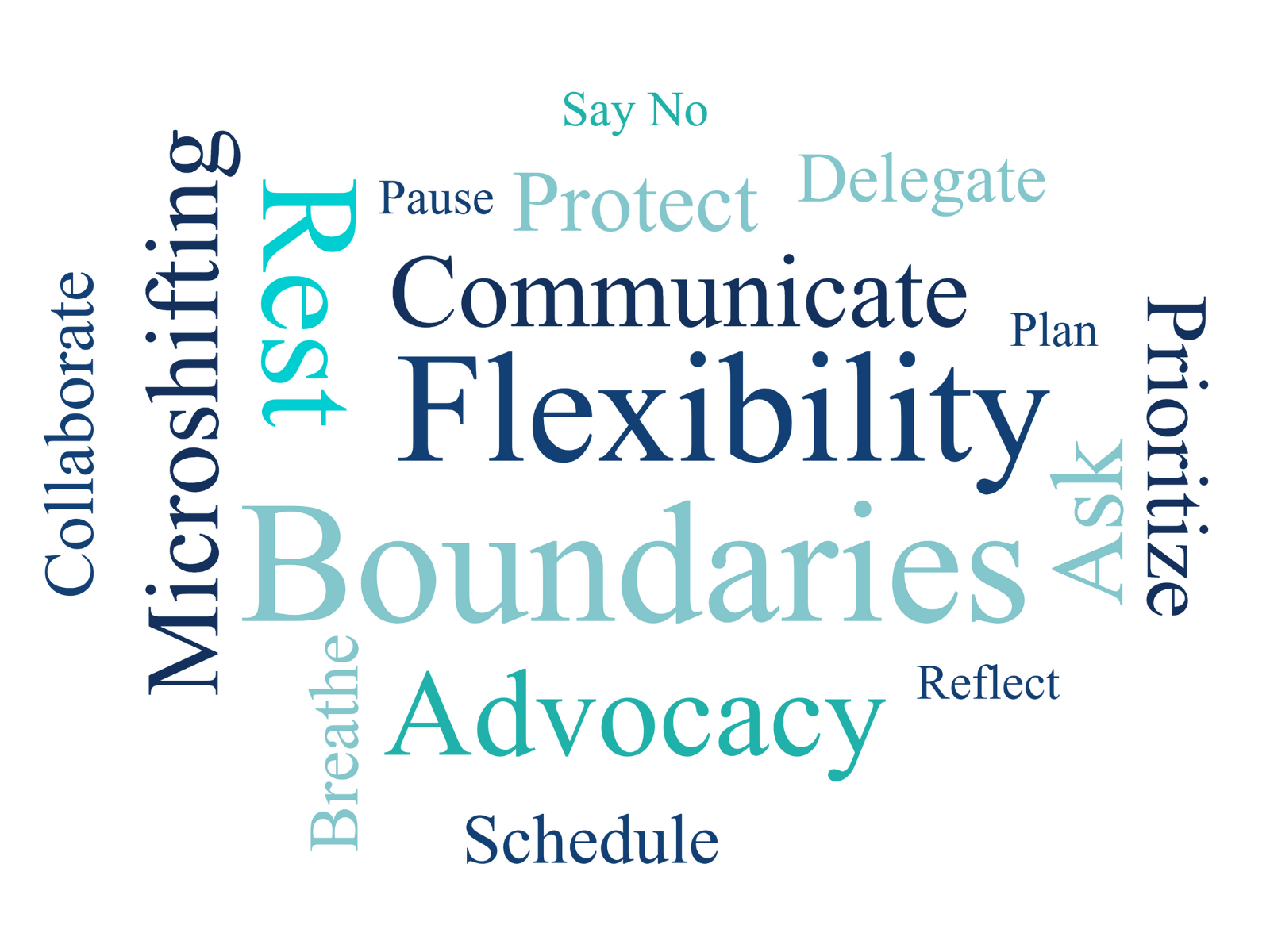Redefining the Workday
Why Flexible Schedules Are the New Standard for Success
For more than a century, the 9-to-5, in-office schedule has been treated as the gold standard of “serious work.” But that model was built for a different era—and it’s increasingly incompatible with the complex lives of modern professionals, especially those balancing demanding STEMM roles with caregiving and community responsibilities.
In Beyond the Pipeline, we examine how outdated structures and narratives shape who gets to thrive. One of the most persistent is the “Ideal Worker” norm: always available, office-first, and measured by hours at a desk rather than outcomes. That model ignores how real work gets done today—and it penalizes the very people organizations say they want to retain.
What the data shows
Recent research points to a durable shift toward flexibility and autonomy:
65% of workers are interested in microshifting—short, intentional work blocks that match energy, duties, or focus, rather than a single continuous block of time.
28% of employees are polyworking, maintaining side roles or projects alongside their primary job. This isn’t disloyalty—it’s a search for growth, learning, and income diversification.
68% of parents worry their caregiving responsibilities could affect job performance, underscoring the need for systems that acknowledge the realities of care.
(Source: Owl Labs, State of Work Report)
In STEM Moms, I emphasize that data alone isn’t enough—what matters is how we create sustainable habits. If you work from home, develop an end-of-work routine to shut down one activity and give your brain space to switch to the next. Consider a walk around the block, a shower, or a change of clothes. Maybe it’s 10 minutes with an audiobook or your favorite pre-pandemic radio station.
Possibly the hardest form of presence to commit to is when you try to create space just for yourself. As caregivers and partners, people are always looking forward to engaging. As valued team members and leaders, others need your input all the time. When you do need alone time, it is hard to protect your space. This is where boundaries come into play. Setting clear and maintainable boundaries is essential.
This isn’t just about employees; it’s good for business too. Leaders report that flexibility works. Nearly 70% of managers say hybrid or remote arrangements have made their teams more productive. When work is measured by output and results, not presence, performance improves and retention follows.
Why flexibility is a leadership issue (not a perk)
Treating flexibility as a perk leaves it vulnerable to rollbacks. Treating it as infrastructure reframes it as a core capability of a high-performing organization. That shift requires:
Outcome-based management
Replace “butts-in-seats” tracking with clear goals, success criteria, and review cadences. If you can’t define success without measuring hours, you don’t have a performance plan—you have a schedule.Calendar transparency and norms
Encourage visible “focus” blocks, meeting-light windows, and team-agreed collaboration hours. Make your norms explicit so people aren’t punished for using the flexibility you offer.Care-aware planning
Avoid defaulting to early/late meetings. Rotate time burdens, record sessions when possible, and offer asynchronous paths to contribute.Career-credible flexibility
Ensure flexible or remote employees get stretch assignments, visibility, and promotion pathways. Flexibility without advancement is a dead end.
Practical steps
For leaders
Audit what you measure. Can you explain success in outcomes, milestones, and impact—not time?
Redesign recurring meetings. Where can decisions move async? What actually requires live discussion?
Publicly protect deep work. Model the behavior you want your team to emulate.
For employees
Communicate your operating system: your focus hours, collaboration windows, and response expectations.
Propose a trial. Suggest a 60–90 day pilot of microshifts or adjusted hours with clear success metrics.
Document outcomes. Track cycle time, quality, and stakeholder satisfaction to make the case with evidence.
The equity lens
Flexibility is not just a productivity strategy; it’s an equity strategy. The old model rewarded homogeneity: a worker unencumbered by caregiving, health needs, or community commitments, and available on office-centric terms. In reality, talent is diverse—and so are lives. When we design for flexibility, we design for retention, belonging, and better business outcomes.
The road ahead
The question isn’t whether the workday will be redefined. It already is. The question is which organizations will do it intentionally—building systems that make flexibility reliable, career-credible, and fair.
The future of work integrates rest, flexibility, and caregiving as inputs to sustained performance, not barriers to it. That future is here for teams willing to measure what matters and lead with trust.
--------------------------------------------------------------------------------
Further reading: Owl Labs, State of Work Report.
Related:
Beyond the Pipeline: Redefining Value, Success, and the Future of Women in STEMM—Together
STEM Moms: Design, Build, and Test to Create the Work-Life of Your Dreams

